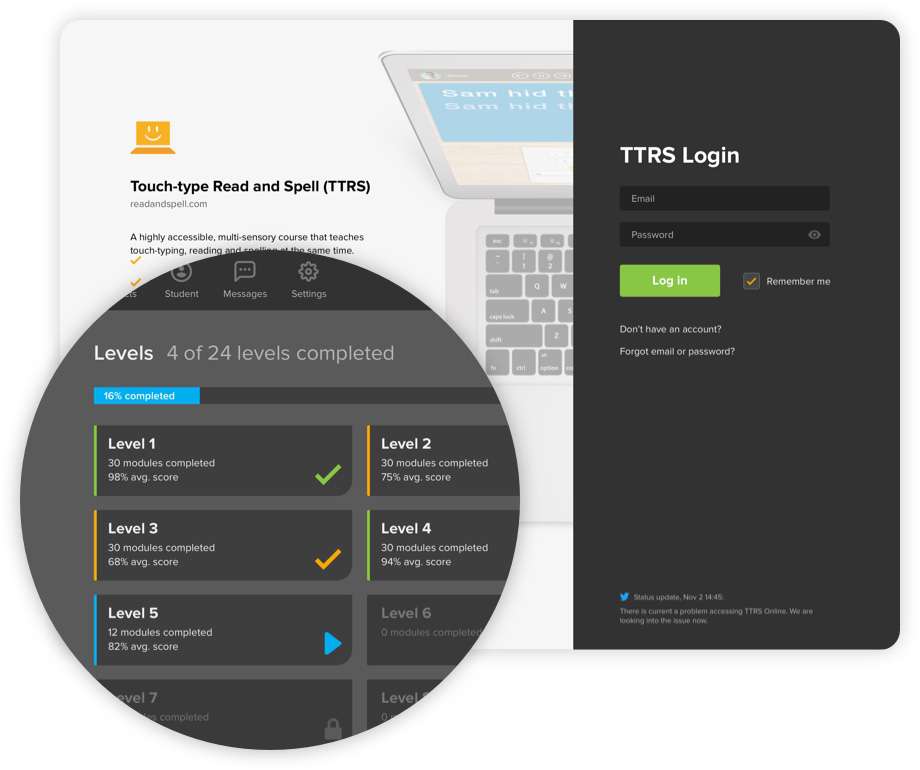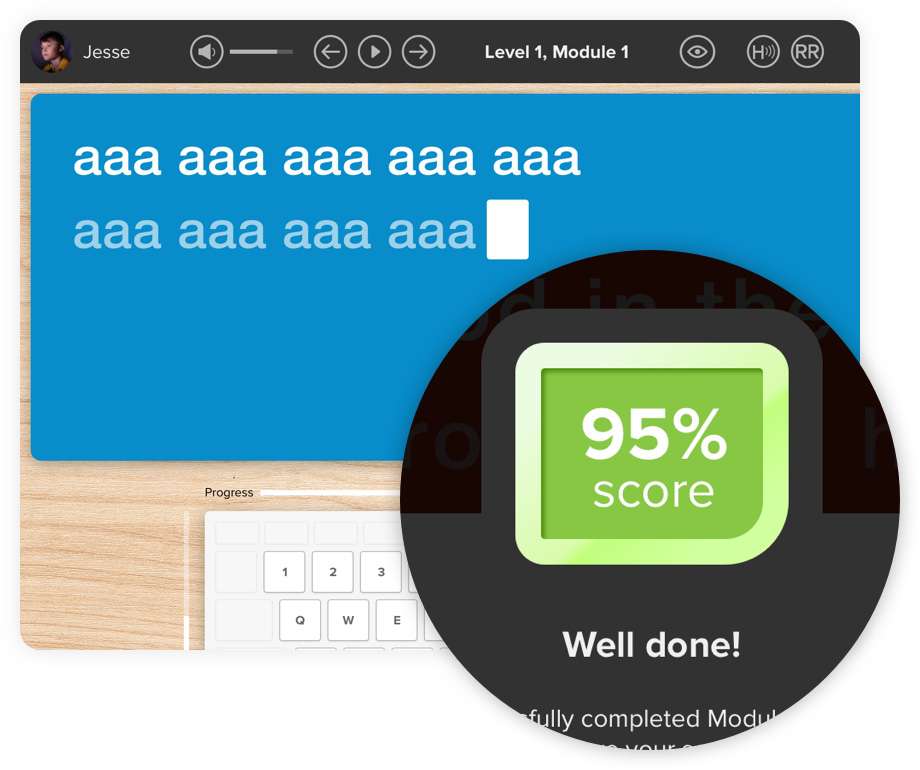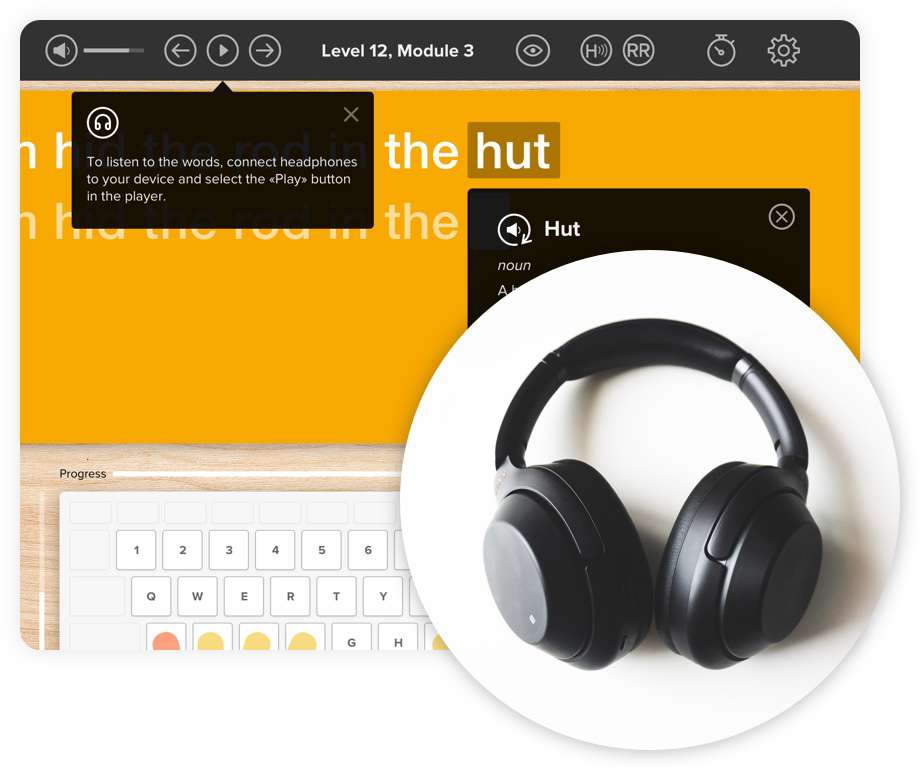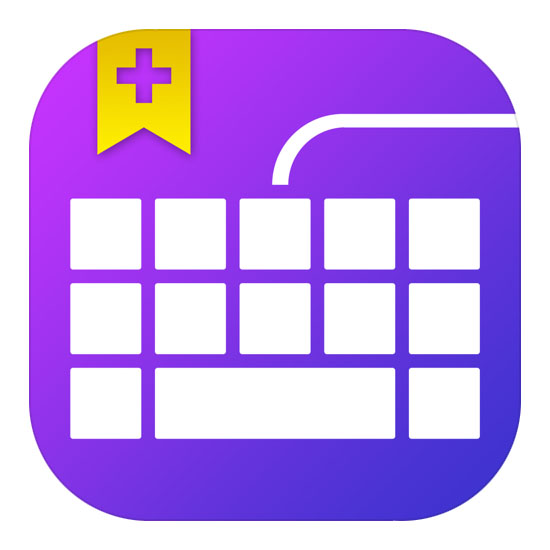
Touch-type, Read and Spell with confidence
An award-winning, multi-sensory course that teaches typing, reading and spelling
Features
Research Based
Developed in line with language and education research, routinely supported by new studies
Dyslexia-Friendly
Content follows word lists from ‘Alpha to Omega,’ a dyslexia-friendly, Orton Gillingham approach
Step-by-Step Learning
There are 24 core levels of 31 modules each, featuring 4,500+ total words
Writing Skills Focus
Free writing sessions help users bridge the gap between typing and writing on the computer
Highly Accessible
Colours, fonts, audio, and designs can be adjusted to meet specific reading, attention and/or sensory-based needs
Custom Content
Subject creator allows admins to add spelling lists and custom lessons to share with learners
Gamified Learning
Trophies and weekly targets motivate learners and encourage regular use of the program
Reporting Features
TTRS helps admins track performance and usage with results dashboards and a smartphone app
Maths & Science
Maths modules support numeracy skills and science subjects help with hard-to-spell vocabulary
Multi-Sensory
Typing lessons engage visual, auditory and kinaesthetic (touch) senses for a fully immersive learning experience
How does TTRS work?
Modular Design
TTRS is modular in design and contains 24 levels with 31 modules in each level. A module typically takes a few minutes to complete and we recommend taking 2-3 modules a session. Student success is encouraged by immediate feedback and positive reinforcement. This feedback includes a score that is based on completion rates and accuracy, not speed or time taken.


First Score – First Success
The course starts with learning to touch-type, read and spell the vowels – a , e , i , o , u. The audio track accompanies the letters as they appear on screen, reinforcing sound-letter correspondence, which is a crucial skill for sounding out words in reading. The user then receives their first score – and success!
Phonics and Repetition
In the second level, the student is introduced to words grouped by onset, vowel-blend and final consonant. For example – fed, wed, led. This teaches phonics in context and at the same time the student learns the position of the keys using the on-screen hand guides.
With repetition, words move from short-term to long-term memory and the skill of typing begins to feel more comfortable. Repetition is also a way of over-learning that can help users with dyslexia overcome working memory and processing difficulties.


Multi-Sensory Approach
TTRS takes a multi-sensory approach to repetition learning. Through the multi-sensory approach, a user hears the words spoken through headphones or speakers, sees the words printed on the screen, and is prompted as to which fingers to press via the on-screen keyboard.
Finally, through the sense of touch, they type out the words, harnessing muscle memory in the hands and fingers to learn spelling.
FAQ
For whom is TTRS designed?
TTRS can help learners with dyslexia, dysgraphia, ADHD and dyspraxia, and individuals who do not have learning differences.
From what age is TTRS suitable?
The program can be used for children aged 7 and up. It is appropriate at primary and secondary level, and is also a suitable program for adult learners.
Can TTRS be used on multiple devices?
Yes! TTRS can be used on any desktop or laptop computer. There is also an iPad app for learning on the go.
Will I need to install TTRS?
TTRS is an online course. After the registration, you can use it without any installation as long as you have an Internet connection. The iPad app also comes with an offline mode.





